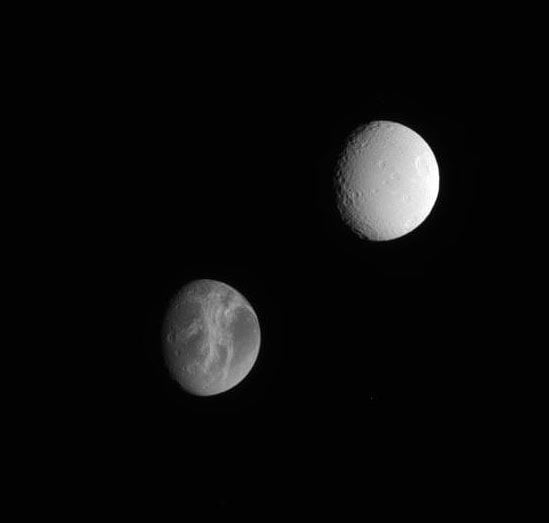Scientists looking at the various Lagrangian Points in our solar system noticed a pattern. Lagrange points, (named after their discoverer Josef Lagrange) are five special locations in the vicinity of two orbiting masses where a third, smaller mass can orbit at a fixed distance from the larger masses. Essentially, the gravity from each large mass is equal at that point and the smaller object can be "trapped" there. The 4th and 5th Largrange points, called L4 and L5, are stable points. Researchers Jack Lissauera, and John Chambers noticed that more than 2200 cataloged asteroids are located about the L4 and L5 points of the Sunâ€"Jupiter system, and five bodies have been discovered around the L4 point of the Sunâ€"Neptune system. Small satellites have also been found librating about the L4 and L5 points of two of Saturn's moons. However, no objects have been discovered around the Earthâ€"Moon L4 and L5 points. Their research led them to believe that other small moons may once have existed in these points.
The triangular Lagrange points, L4 and L5, form equilateral triangles with the two massive bodies (here, the Earth and the moon) and objects near L4 and L5 can remain close to these locations indefinitely.
Lissauera and Chambers say that using numerical integrations, they've shown that orbits near the Earthâ€"Moon L4 and L5 points can survive for over a billion years even when the sun's gravity is thrown into the mix. However, when the small perturbations from the other planets are present, that can destabilize the orbits at L4 and L5 within several million years. So, they deduced that even though there's no objects at those points right now, that doesn't mean there wasn't something there in the past.
The leading candidate for the theory of the moon's formation is that a Mars-sized object hit the Earth and the resulting debris formed the moon. The two researchers say other debris would have been present as well, and may have been trapped at the L4 and L5 points.
However, one has to wonder, with the moon, as well as Earth, in a state of flux following the collision, their gravitational fields may have been unstable enough to preclude any L points at the stage where the other debris or moons were in the area. Also, the moon used to be closer to Earth, and the L points would have changed over time, and this change also might have been enough to disengage any "trapped" moons.
But it's interesting to consider the night sky with multiple moons.
Original News Sources:
Icarus
,
New Scientist
 Universe Today
Universe Today
